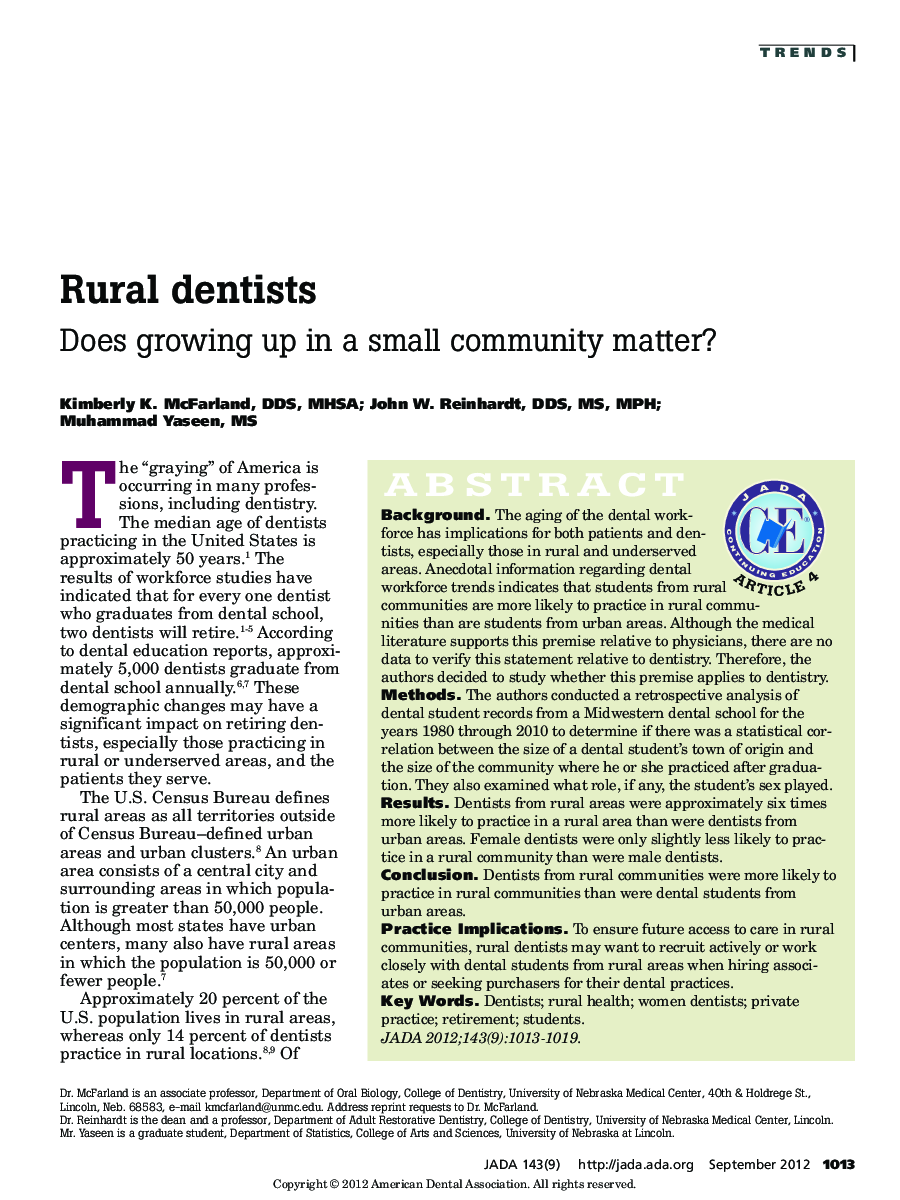| Article ID | Journal | Published Year | Pages | File Type |
|---|---|---|---|---|
| 3137486 | The Journal of the American Dental Association | 2012 | 7 Pages |
ABSTRACTBackgroundThe aging of the dental work-force has implications for both patients and dentists, especially those in rural and underserved areas. Anecdotal information regarding dental workforce trends indicates that students from rural communities are more likely to practice in rural communities than are students from urban areas. Although the medical literature supports this premise relative to physicians, there are no data to verify this statement relative to dentistry. Therefore, the authors decided to study whether this premise applies to dentistry.MethodsThe authors conducted a retrospective analysis of dental student records from a Midwestern dental school for the years 1980 through 2010 to determine if there was a statistical correlation between the size of a dental student's town of origin and the size of the community where he or she practiced after graduation. They also examined what role, if any, the student's sex played.ResultsDentists from rural areas were approximately six times more likely to practice in a rural area than were dentists from urban areas. Female dentists were only slightly less likely to practice in a rural community than were male dentists.ConclusionDentists from rural communities were more likely to practice in rural communities than were dental students from urban areas.Practice ImplicationsTo ensure future access to care in rural communities, rural dentists may want to recruit actively or work closely with dental students from rural areas when hiring associates or seeking purchasers for their dental practices.
